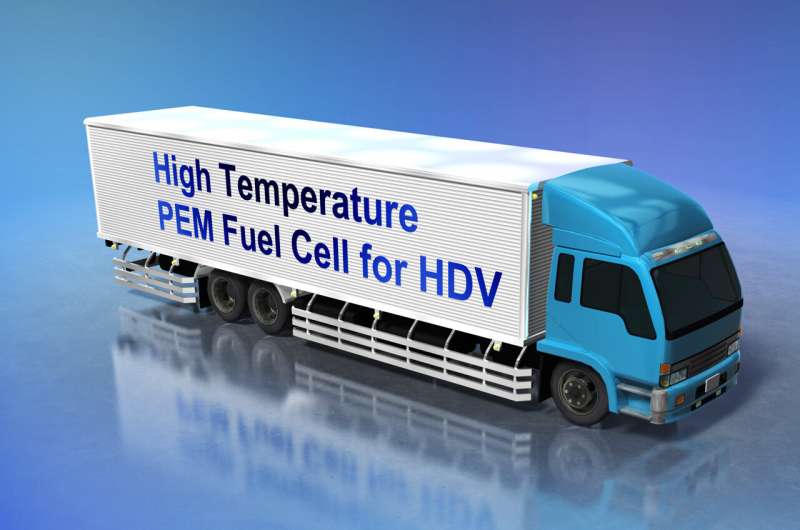
December 10, 2024 by Nagoya University
Collected at: https://techxplore.com/news/2024-12-fuel-cell-electrolytes-advances-net.html
A research group led by Atsushi Noro at Nagoya University in Japan has announced a novel design concept for fuel cell electrolytes, utilizing a phosphonic acid polymer with hydrocarbon spacers. This innovative concept allows fuel cells to operate effectively under high-temperature (above 100°C) and low-humidity conditions, addressing crucial barriers to their broader use.
The research has been published in ACS Applied Polymer Materials.
By electrochemically reacting hydrogen and oxygen, fuel cells produce electricity while emitting only water, highlighting their clean energy capabilities. However, perfluorosulfonic acid polymers, a type of per- and polyfluoroalkyl substance (PFAS) commonly used in fuel cells, is causing a backlash. The presence of PFAS in the environment and their accumulation within living organisms has prompted regulatory measures in many nations.
Unlike PFAS, phosphonic acid hydrocarbon polymers do not contain fluorine, making them less likely to persist in the environment. These polymers also exhibit moderate chemical stability under high-temperature and low-humidity conditions. Despite these advantages, poor conductivity and the hydrophilic nature of phosphonic acid groups, which attract water, limit their use, potentially leading to dissolution in humid environments.
To overcome these challenges, Noro introduced a hydrophobic spacer between the polymer backbone and the phosphonic acid groups of a phosphonic acid hydrocarbon polymer. This enabled water insolubility, chemical stability, and moderate conductivity, even at high temperatures and low humidities. Additionally, the hydrophobic spacer effectively repelled water, ensuring that the material’s stability was maintained.

The new membrane demonstrated significantly higher water insolubility in hot water compared to polystyrene phosphonic acid membrane without hydrophobic spacers and a commercially available membrane of cross-linked sulfonated polystyrene.
“Under conditions of 120°C and 20% relative humidity, the conductivity of the developed membrane reached 40 times higher than polystyrene phosphonic acid membrane and four times higher than cross-linked sulfonated polystyrene membrane,” Noro said.
“Finding a fuel cell that operates under low-humidity and high-temperature conditions offers many advantages for fuel cell vehicles,” Noro continued.
“First, the reactions at the electrodes of a fuel cell proceed more rapidly at higher temperatures, enhancing overall performance of the fuel cell and improving power generation efficiency.
“Second, there is reduced carbon monoxide (CO) poisoning of the electrodes, as trace amounts of CO in the hydrogen fuel tend to adsorb onto the catalyst at lower temperatures, but not at higher temperatures.
“Third, the fuel cell benefits from more efficient heat dissipation at high temperatures, allowing simpler cooling system designs and no external humidification, enabling lighter and more compact systems.”
According to the New Energy and Industrial Technology Development Organization (NEDO) Roadmap for Fuel Cell and Hydrogen Technology Development, the proposed design concept for electrolyte membranes presented in this study marks a major contribution to developing next-generation fuel cells that support the shift to a net-zero carbon society.
Patent applications for materials related to the suggested design concept have been filed in Japan and several other countries.
More information: Polymer Electrolyte Membranes of Polystyrene with Directly Bonded Alkylenephosphonate Groups on the Side Chains, ACS Applied Polymer Materials (2024). DOI: 10.1021/acsapm.4c02688. pubs.acs.org/doi/10.1021/acsapm.4c02688
Journal information: Applied Polymer Materials

Leave a Reply